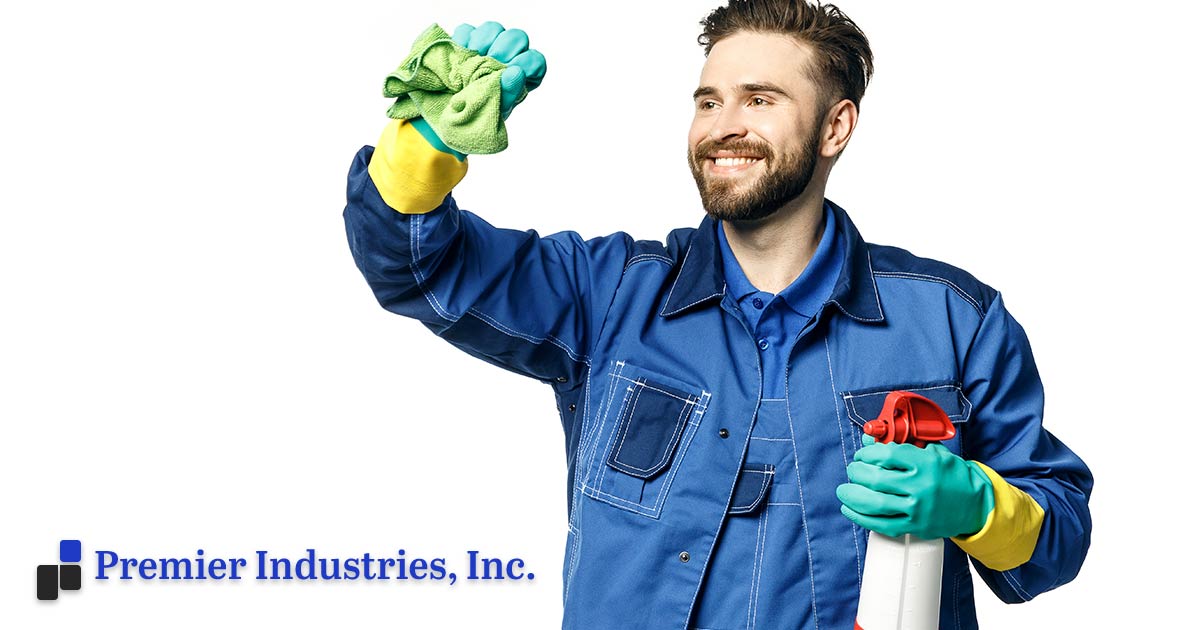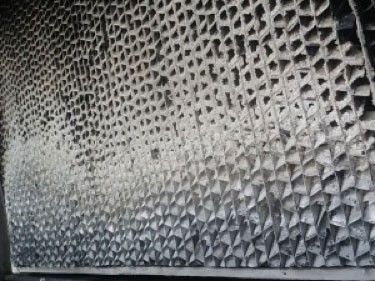
4 Tips to Prevent Deposits from Forming in Evaporative Coolers
October 3, 2018 10:12 pm Leave your thoughtsAn evaporative cooler is a must-have piece of machinery here in the hot, dry Southwest. It will help you keep your home cool all year long, while also introducing some humidity into your internal environment.
Of course, there are some common maintenance issues that pop up with this equipment, including the formation of deposits inside the system. Because the water in Arizona tends to be hard, meaning it’s rich in minerals, the process will result in larger amounts of calcium and alkaline deposits being left on the cooler pads and the cooler interior. When left unchecked, these deposits can result in corrosion of the metal housing and a substantially worse operating life of the cooler.
With this in mind, here are some tips to help you prevent deposits from forming on commercial and residential evaporative coolers.
#1 Check the system at the start of each season
Before you get into the real heavy cooling season, make sure you do a pre-season inspection to ensure the system is in good condition and does not have any remaining deposits from the previous season. Thoroughly clean out the cooler, taking off the panels and scrubbing them with a water/vinegar mixture. Make sure you’ve cleaned the vanes of the panel of all buildup and debris.
Never use water from a water softener. The sodium-rich nature of softened water can result in increased scale buildup.
#2 Use quality pads
The types of cooler pads you use can make a significant difference in preventing deposit buildup. Whatever brand you go with, make sure they’re good ones. If you need to change them during the course of the season, do so as often as you need to. Usually you’ll change the filters two or three times per season, but if you have water that is especially hard, you might need to do so even more often than that.
#3 How to Remove Calcium Deposits from Swamp Cooler Pads
Make cleaning a priority
One of the most common questions we receive is, “how do you remove calcium deposits from evaporative cooling unit pads?” You should regularly clean out the interior of the unit to prevent deposits from forming. The best cleaner is a simple mix of white vinegar and water. You should clean the water pan reservoir at the bottom of the cooling unit at least once a month throughout the season to prevent minerals from building up inside. You should also wash the water curtains and filter every couple weeks with some mild detergent and lukewarm water.
#4 How to Prevent Calcium Build Up in Swamp Coolers
End of season maintenance
Once the cooling season has come to an end, there will be a little more maintenance you’ll need to perform before you’re done for the year. First, drain out the unit, then give it a last cleaning to remove any debris that has built up. If you have a fan-only setting with your unit, run the fan for about an hour before you empty it and clean it so you can get everything completely dry.
For more information about how you can prevent a buildup of mineral deposits on your residential or industrial evaporative cooler parts in Phoenix and throughout the Southwest, contact the experienced team at Premier Industries Inc. today.

Summers are often too hot, and you might be looking for ways to beat the heat. It would be wise to invest in an evaporative cooling unit to keep your home cool during this time.
Sometimes, water minerals may build up in your evaporative cooling unit, so some maintenance is essential to keep it working efficiently. There are various ways you can prevent the deposits from forming in your evaporative cooler.
Here are some tips for preventing deposits from forming in evaporative coolers.
Check the Evaporative Cooler at the Start of Every Season
Before you turn on your evaporative cooling unit, ensure that you conduct a pre-season examination to confirm that it is in good working condition and that it does not have any residual deposits.
You will typically need to clean your evaporative cooling unit by taking off the panels and scrubbing them. Various cleaning products are available for safe cleaning process.
Safe to Use Cleaning Products
Regular maintenance leads to fewer repairs and better performance of your evaporative cooling unit. However, you can always keep your machine water fresh and deposits free with cleaning products such as:
- The Purge Pump
Purge pump keeps your evaporative cooling unit clean by cleaning it after every six to eight hours of use. It pumps out some water from the pan and takes in freshwater. You can quickly hook up a purge pump with a two-sided plug that is inserted into the available electric pump outlet. The cooling unit’s pump then plugs itself at the back of the purge pump stopper. - Water Filter
Water filters help you get rid of minerals before they clog your evaporative cooler pan. The filter is easy to install as you only cut out a small part of poly water line/ copper. You then join in the filter using the constricting fitting at the end of each filter.Note that you can install the filters in any place on the waterline in front of the evaporative cooling unit. Ensure that you replace the water filters after 3-6 months during the cooling season. - Drop-In Tablets
Another way of preventing mineral buildup is by releasing drop-in tablets into your coolers pan. The tablets work similarly as de-scaler or liquid coolant cleaner, although you leave them in the evaporative cooling unit. The tablets improve water quality with little or no buildup.
Regular Maintenance
- Use Quality Pads
The quality of cooler pads you use on your evaporative cooling unit determines your coolant’s ability to prevent deposit accumulation. Quality pads will only need to be changed seasonally, although this can vary depending on how hard your water is. Besides buying top-notch pads, regular maintenance is essential, and there are a few ways to maintain your cooling unit places and the entire evaporative cooling unit. - Clean the Cooler Regularly
Clean the equipment regularly using a mixture of white vinegar and water. Clean the water reservoir at the bottom of the cooling unit at least once a month during summer to keep deposits at bay. When cleaning, you should turn off the cooling unit, then scrub it with a stiff brush soaked in water and vinegar mixture. After scrubbing, rinse the cooling unit with fresh water. Ensure that you maintain the chemical scale indicated on the package instructions for increasing mineral solubility and prevent them from sticking on the pads. If possible, try to clean the water curtains and filter at least twice a month with lukewarm water and a mild detergent to keep off dust and debris. - Add a Bleed-Off Valve
You can also add a bleed-off valve to your evaporative cooler water line that drains water from the reservoir to the Aspen filters. - Shut the Evaporative Cooler
After the summer season:1 Do a little maintenance by draining the equipment.
2 Clean your unit before the beginning of the next season to remove mineral buildups and debris.
3 After cleaning, cover your cooling unit with a canvas cover and store it for the next season.
Possible Damages You Should Look to Avoid in Your Evaporative Cooler
- Clogged Water Distribution Lines
Sometimes hard water builds up in your cooling unit distribution line and reduces water flow to the pads. If the evaporative cooling unit pads don’t get enough moisture, its blower will eventually blow hot air into your home.
Therefore, you should remove hard water buildup every season to maintain a well-functioning cooler. - Hard Water Buildup on Water Pumps
Swamp cooler water pumps are essential for pumping water from your cooling unit’s base into the distribution tubes to wet the pads. Hardwater can accumulate and corrode the pump, reducing its capacity to pump ample water into the distribution tubes, causing them to completely break down.It is therefore vital to clean the pump at the beginning of every season thoroughly. In case the pump is extensively corroded, you should replace it with a new one. - Hard Water Build-Up on Cooler Pads
When hard water builds up on your cooling unit’s pads, they may not be able to hold water and will minimize the cooling capacity. If this happens, then it is crucial to replace the old pads with new ones every season. Proper maintenance of your evaporative unit is vital for its proper functionality. If you wish to have a cool home environment during the hot season, it would be great to follow the tips discussed above to keep your evaporative cooler in good working condition.
Categorised in: Evaporative Cooler Parts
This post was written by Mike Nicolini
